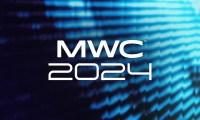The technology and innovation that makes the latest televisions produce such beautiful images is coming to our smartphones. TV tech has actually been seeping down to phones for a while, as displays that use similar panel technology get bigger, boast higher resolutions, and have lower power consumption. It hasn’t always been easy to immediately see the benefits of these features, but that’s not the case with the latest TV-influenced features now hitting the newest smartphones.
Treating the screen this way makes a lot of sense. It may not always be that big, but it’s probably the one you look at the most, and if it doesn’t look good or show much detail, it ruins the joy of owning and using a phone. At Mobile World Congress 2017, LG and Sony both brought the tech used to make their TV’s so good across to smartphones, and the good news is, you’re definitely going to see a difference.
HDR: Not just for cameras anymore
Until recently, High Dynamic Range (HDR) technology was something you probably associated with the camera on a smartphone; but the latest 4K Ultra HD TVs now support
Both Sony and LG have integrated
Growing library
However, DolbyVision and
The G6 has both DolbyVision and HDR10 onboard. We asked for an explanation of the differences, without getting caught up in the technical aspects, between the two. “From a consumer perspective, it’s not a consistent experience between devices with HDR10,” Fink told us. “When you have five different HDR10 devices next to each other, all the video will look different.” We should think of DolbyVision as a more feature rich version of the open-source HDR10 platform. “The underlying video format is the same and was developed by Dolby, but with lots of goodness added into DolbyVision.”
This brings a few interesting benefits, Fink explained: “Because we control the whole process from camera to display, we can insert information into the video that allows us to control the playback, so you get consistent colors and skin tones, plus we can control the backlight. By adaptively adjusting it throughout playback on the G6, DolbyVision content consumes 15 percent less power than standard dynamic range video.”
DolbyVision is also 10 percent more efficient when it comes to bandwidth, which means the buffer time will be lower when streaming a compatible video to your phone. While these streaming files aren’t small, there’s no need to wait for mega-fast gigabit mobile internet connections to come along before enjoying them. “The top tier of the bitrate is 6Mbps,” Fink informed us, adding that Amazon and Netflix dynamically stream the file and adapt it based on network speed. If your connection is poor, the quality is reduced.
More phones to come
Watching DolbyVision back-to-back with the Full HD video on the G6, it’s impossible not to fall in love with the
We also checked out Sony’s XZ Premium running alongside last year’s Xperia Z5 Premium. Both have the ability to play 4K resolution video files, but only the new XZ Premium has
Even though the screens on both these phones are smaller than your TV, the benefits of
Rational ratios
Introducing
Mobile devices are rapidly becoming our primary screen, rather than the second screen many consider them at the moment.
Why? Leaving aside the user interface advantages — the screen can be split into to squares, making it more suited to running two apps at the same time, for example — it’s a happy medium between the two most used modern video aspect ratios, 16:9 and 2.20:1. It’s not LG that says this, it’s cinematographer Vittorio Storaro, the man pushing for industry adoption of 18:9, which he calls Univisium. If you’ve watched Netflix’s Stranger Things, then you’ve already seen an 18:9 aspect ratio presentation.
Storaro talked about 18:9 during LG’s announcement of the G6. When asked how it will benefit anyone watching video on a
Bring the noise
Perhaps surprisingly, neither Sony nor LG made much noise about the audio ability of their new phones. The G6 has Dolby Audio inside, but not Dolby Atmos, which has been used on several phones since 2015, but sound is only pushed out through a single speaker. Sony’s XZ Premium has stereo front speakers. Neither have the sonic capabilities to match their visual prowess, which is a shame. This is especially true for the G6, as LG has removed the new Quad DAC destined for South Korean G6 phones on versions set for release in the U.S. market.
More: The top tech trends from MWC 2017
Mobile devices are rapidly becoming our primary screen, rather than the second screen many consider them at the moment. By 2021, nearly 80 percent of mobile data traffic is expected to be video, so
Excitingly, 2017 looks set to be the year in which we can buy the first mobile devices that truly exploit the same visual tech treats that make us all want to splash out on a new big-screen TV.










